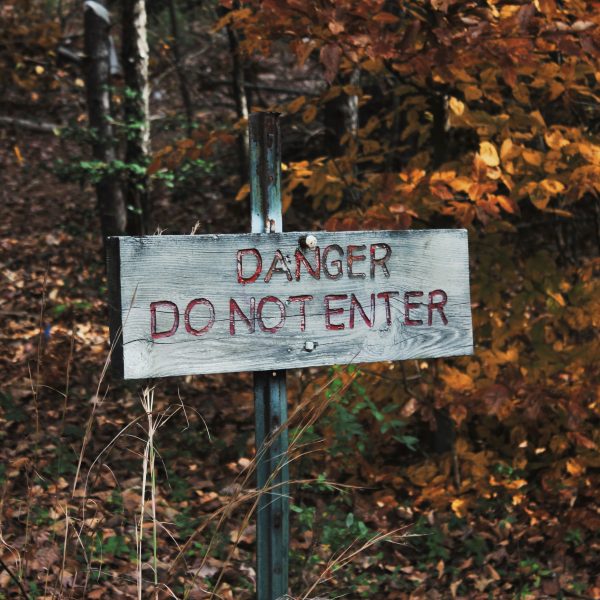New stats highlight the myth of stranger danger and support child protection measures

Before continuing with this story readers should be aware that it contains information and discussion in relation to sexually based offences against children, and should consider their own position, perspective and wellbeing before engaging. A list of support services has been provided at the conclusion of this piece.
The release of the first Australian Sexual Offence Statistical (ASOS) collection report has highlighted a number of important points of note for the early childhood education and care (ECEC) sector, including the myth of ‘stranger danger’ and the importance of having child safety conversations from a young age.
ASOS was established in 2022 as part of the First Commonwealth Action Plan to Prevent and Respond to Child Sexual Abuse 2021-2024.
The ASOS report covers the prevalence and nature of sexual offending across Australia for the first time, bringing together data on sexual offences, alleged offenders and victim survivors from state and territory police sources. It covers a one-year period from 1 July 2021 to 30 June 2022.
Key report findings include:
- the sexual offending rate between 2021 and 2022 was 40.11 per 100,000 population aged 10 years and over;
- more than 9 in 10 sexual offenders were male;
- offenders had an average age of 36.4 years at their first or only police proceeding for a sexual offence; and
- around one-third of offenders were a non-family member known to the victim (32 per cent), one-third were either an intimate partner (15 per cent) or other family member of the victim (19 per cent), and one-fifth were a stranger (21 per cent).
The final key finding was of particular note to Nicole Talarico, early childhood consultant, advocate and author of Asserting a Culture of Child Safety.
“Stranger Danger rolls off the tongue, but it is not a useful slogan for mitigating harm to children,” she said.
“If we perceive strangers as the main cohort of people to be wary of, we do not accurately capture the veritable scope of who perpetrators actually are. A focus on strangers denies the reality of damaging encounters that do occur between children and close contacts.”
“People who have access to children in home environments not only have ease of accessibility to children away from public view, but these harmful acts are sheltered by a foundation of trust,” she continued.
“Oversight of the possibility of abuse is further from our minds if we assume abuse is predominantly carried out by people outside the home. The sad reality is this is not the case, and these statistics show us that abuse from strangers does not happen at the same frequency it does by close connections.”
Protection for children against those who seek to do them harm, she continued, starts with education, and that education must start early.
“Learning to recognise those early warning signs in our bodies, when we are experiencing an uncomfortable encounter, and knowing we have rights to privacy with body boundaries respected, has to be content we include in our education curriculums,” Ms Talarico said.
“As educators, we are in a vital position to teach children body safety, but this proactive approach needs collaboration with our communities. The sharing of information with families is a necessity for protecting children when they are away from your service. There is a wealth of information to help you empower your communities, with insight and tools to address the potential dangers of others. This might be confronting for some parents, but abuse prevention is not possible by ignoring the facts.”
Ms Talarico recommends the following resources for educators who are seeking to deepen their understanding of how to protect children, and how to educate families on the importance of age appropriate safety messages:
- The Australian Childhood Foundation’s What happens inside our bodies when we feel things?
- The Raising Children Network resource Talking to children
- Educate2Empower Publishing’s body safety and consent bundle
- The National Centre for Victims of Crime tip sheet
- Committee for Children’s How to Talk with kids about Personal Safety and Sexual Abuse
The statistics, Ms Talarico said, are both shocking and sobering, and outline the scale of the problem which all Australians must work together to tackle.
Every single one of these statistics represents harm and trauma to individuals, their loved ones and the entire community. The full report is available on the AIC website.
If you or someone you know is experiencing, or at risk of experiencing, domestic, family or sexual violence, call 1800RESPECT on 1800 737 732, chat online via 1800RESPECT.org.au, or text 0458 737 732.
If you are concerned about your behaviour or use of violence, you can contact the Men’s Referral Service on 1300 766 491 or visit ntv.org.au
Feeling worried or no good? No shame, no judgement, safe place to yarn. Speak to a 13YARN
Crisis Supporter, call 13 92 76. This service is available 24 hours a day, 7 days a week.
Popular

Policy
Economics
Jobs News
Provider
Workforce
Children’s Services Award changes finalised to address gender-based undervaluation
2025-12-12 06:58:10
by Fiona Alston

Provider
Workforce
Quality
Fair Work Commission confirms forced resignation grounds in case involving early learning provider
2025-12-08 07:30:23
by Fiona Alston

Workforce
Quality
Practice
Provider
Research
How one teacher is using Little J & Big Cuz to build empathy, understanding and confidence in First Nations learning
2025-12-08 07:15:19
by Fiona Alston
















